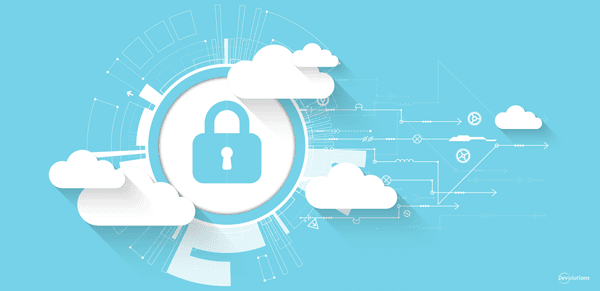
A World with Technology and Automation
October 16, 2019
5 Top Cloud Security Challenges and Their Solutions
October 22, 2019Data makes the world go ‘round, and this is especially true when it comes to businesses. A company’s data is vital both to its everyday operations as well as its future. As business data volumes continue to grow, the demand for better performance will increase, and thus, so will the cost to manage this data. Moving data from one location to another is expensive. It is estimated that moving 1 Exabyte (1 million terabytes) of data into a public cloud will cost a business $30M. Where does this leave the future of data storage? The answer will be in Edge computing, tiered storage, and artificial intelligent systems.
Organizations Will Adopt a Tiered Approach to Storing and Managing Data
Because the cost of moving data is expensive, many organizations may adopt a tiered approach in the way they store and manage data. In this sense, a company’s data could be in different locations, including a private cloud, public cloud, edge environments, and colocation providers.
The tiered method uses different storage for specific reasons. Businesses can use the higher-cost room for a company’s critical data, lower cost-cost storage for nearline access, and lastly, cloud storage for low-access data needs.
Online Storage Tier – This is where the company’s most active data is stored. Online storage is usually more expensive, so this should be where the company’s most frequently accessed data should be located.
Nearline Storage Tier – This is the middle ground of storage. This type of storage enables rapid data access and offline storage. This tier is a more affordable option, but it does take longer to access data. Nearline storage reduces the cost of storage without severely decreasing speed. Companies can also replicate data to a nearline data protection device.
Offline Storage Tier – This type of storage has copies of archived data at a remote location. This is for data that isn’t as frequently accessed. There are different ways this can be achieved; one of the best options for a company is to have removable media that can be transferred to another location.
Offsite Copy – An offsite copy of data is recommended in case of a disaster causing damage to the primary storage. This is where the cloud can be helpful. Most cloud providers will offer disaster recovery, business continuity, and also scalability (both the amount of storage and speed of access as your business grows).
By having a tiered method of data management, your company will see many benefits. A tiered method will lower costs by reducing resources that are used to manage backups and restore lost data. It will save money by moving static data onto nearline or offline storage. A company can also increase efficiency by automatically migrating data to one of the other tiers. Lastly, having a tiered system can reduce the company’s risk of losing data. Having multiple places where the data is stored both offline and offsite can be beneficial in a disaster.

Photo Source: zdnet
Big Data Will Demand More Edge Computing Environments
Edge brings the data service provider closer or at least the computing power of the provider closer to the user. Because the closer the power source or computing power it is to the user, the faster and stronger the service will be
We are all using the cloud (whether you know it or not) with the use of Gmail, Facebook, Dropbox, or any of the services like these. Edge computing won’t change the way we interact with the cloud, but it will change how cloud systems and data centers, in general, may operate.
Data centers and cloud services are known as centralized systems. Through Edge computing, these services will be “closer” to its users. This just means it’s faster. The most essential idea to take away from Edge computing is the idea of location. Because these Edge computing platforms will be closer to its users, it will make connections faster and maybe even more reliable. Through Edge computing, a company’s data will be more secure. One of the main reasons companies want to bring their data to a service provider is to take advantage of the extra services. One of these aspects is security.

Photo Source: volico
Automation and Artificial Intelligence Will Be Necessary
We are creating so much data every day that automation and artificial intelligence will play a vital role in data management. Data management strategies will rely on automation and artificial intelligence. With all the data coming in and needing to be stored and managed, it will become more challenging to configure and manage everything by hand. In the future, we will rely more on software and automation.
This is where artificial intelligence and machine learning will become more critical. Machine learning is an algorithm within artificial intelligence that allows the software to predict outcomes and create solutions without extra programming. Within deep learning is what’s called Deep Learning. This is where the program becomes smarter as time goes by. This type of artificial intelligence is what will make automation within a data center run on its own. Managing data can get very busy, and as we continue to create more data, the data management effort will need to grow significantly. This is where automation and artificial intelligence can solve this problem of manpower.
This is where we will need a more hi-tech data center environment. Artificial intelligence and other automation techniques will be vital to the growth and direction of where big data will be going.

Photo Source: medium
Conclusion
The world is creating more data every day, and this is no different for businesses. As companies generate more data, the idea of data will become more valuable. And the cost will increase, and the performance of accessing and managing this data will also increase. Most of us are currently using a public cloud for personal use because it’s easy, and there isn’t too much to worry about, but for businesses, a public cloud may not be the best way to go forward. Big data will change these strategies and will most likely bring companies to a tiered method of management.
And because of the increase in demand for data storage, providers will use new technology found in edge computing and artificial intelligence to keep up with the growing need.

